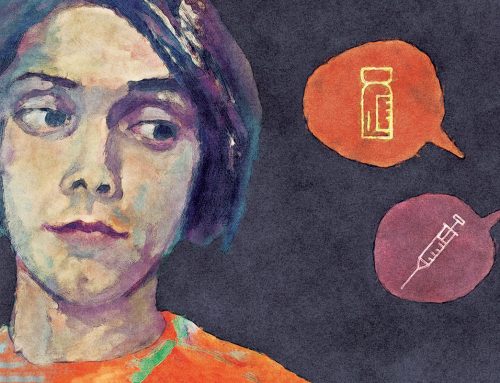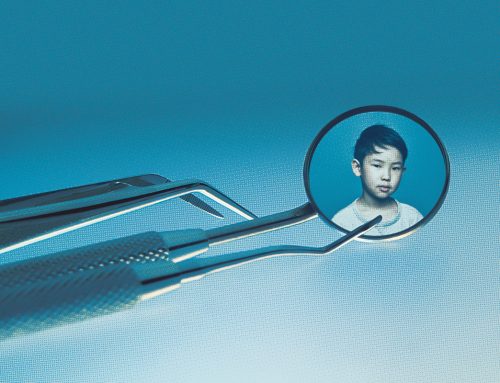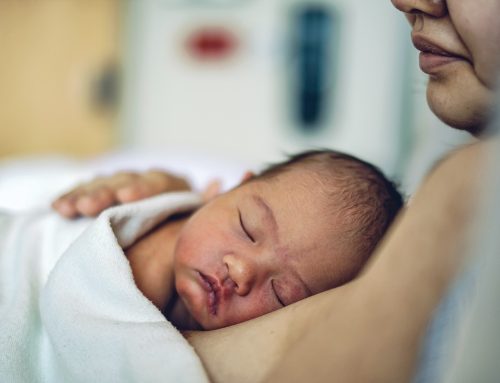

Above: A corner grocery store at East 142nd Street and Brook Ave in the Bronx. GOOGLE MAPS STREET VIEW
Measuring the impacts of gentrification on food environments
Research has shown that gentrification and its associated socioeconomic changes can be a factor in destabilizing food environments, affecting food access and health.
A new article by Associate Professor Nevin Cohen and University of Toronto colleagues Olivia Caruso and Michael Chrobok adds to the emerging literature on gentrification’s effects on food environments.
The authors used Google Street View to record changes to all food stores in the Bronx between 2008 and 2017. During this period, the total number of food retailers grew by 11.4 percent, from 2,231 to 2,486 stores. By 2017, 619 new food stores had opened where food retail did not exist in 2008. Supermarkets increased from 161 to 190 while dollar or discount stores grew from 119 to 171.
To assess whether these changes differed in lower income, gentrifying, and more affluent neighborhoods, the researchers calculated the odds of food retail change by census tract type. They first analyzed all forms of food retail instability, and then tested a novel index that weighted store openings and permanent closures more heavily than store name or retail segment changes.
The researchers found that while lower income and gentrifying census tracts had significantly higher odds of food retail change overall, there was no significant relationship between census tract type and instability when openings and closures were weighted most heavily.
The methods used in this study can be applied in other locations to track the status of retailers over time and across neighborhoods.
“Understanding which neighborhoods are most vulnerable to unstable food environments can help policymakers prioritize support for existing food businesses, identify emerging business segments, like dollar stores, that account for large changes to food environments, and ensure that zoning and development projects that alter the commercial landscape do not hinder food access for longstanding residents,” Dr. Cohen added.
Olivia Caruso, Michael Chrobok & Nevin Cohen (2022): Gentrification and Food Retail Instability: A Census Tract Analysis of the Bronx, New York, 2008 and 2017, The Professional Geographer, DOI: 10.1080/00330124.2021.2000440

Emma Tsui
Occupational stress in marginalized care workers and the implications for societal health
The demand for home care aides is projected to grow by more than 30 percent over the next decade, making it one of the fastest growing occupations in the United States. Despite the demand, low wages and challenging working conditions have made it difficult to attract and retain these essential workers, a dynamic made worse by the COVID-19 pandemic.
CUNY SPH Associate Professor Emma Tsui and colleagues have conducted a series of studies over the last two years to further understand occupational stress, particularly around patient death, among home health aides and its impact on worker well-being and employee retention, resulting in five recently published articles.
“It is well known that home health aides often form strong relationships with their patients, which benefits patient care,” Professor Tsui says. “We found that aides often play a significant role in the end of a patient’s life, providing both practical and existential support, but often without being adequately informed about their patient’s health status or robustly trained for the emotional labor the end of life requires.”
The team’s research suggests that improved aide training on end-of-life issues, supervisor training for supporting aides, and dedicated paid time off following client death could meaningfully shift aides’ work stress related to client death.
The published work includes: “Expanding the Conceptualization of Support in Low-Wage Carework: The Case of Home Care Aides and Client Death” published December 2021 in International Journal of Environmental Research and Public Health, Supplement: Work, Health, and Equity; “We want to hear your problems and fix them: A Case Study of Pandemic Support Calls for Home Health Aides” published February 2022 in Home Care Services Quarterly; and “Awareness, Acceptance, Avoidance: Home Care Aides’ Approaches to Death and End-of-Life Care” published March 2022 in OMEGA – Journal of Death and Dying.
Furthering the impact of this work, Professor Tsui and her collaborators published both a recent commentary in New Solutions calling for a new model for societal health that recognizes care-workers of all kinds and an invited editorial in the American Journal of Public Health highlighting important directions for public health research on worker well-being.

CUNY SPH researchers develop reporting guidelines for human microbiome research
The interdisciplinary nature of human microbiome research makes organization and reporting of results a challenge, while inconsistent reporting can make it difficult to replicate results and determine the comparability of independent studies. To address this problem, CUNY SPH Associate Professors Heidi Jones and Levi Waldron, along with doctoral candidate Chloe Mirzayi, led the development of a checklist to guide the preparation and review of manuscripts in human microbiome studies.
For the study, which was published in Nature Medicine, the researchers built a consortium of 101 authors from 89 institutions in 17 countries to refine and agree on the Strengthening The Organization and Reporting of Microbiome Studies (STORMS) checklist and develop a consensus statement on the need for it. The consortium authors included nine faculty, staff, students, and alumni from CUNY SPH and the Institute for Implementation Science in Population Health (ISPH). Use of the checklist has been adopted by the Nature family of journals as a requirement of publication.
“I’m thrilled to see the field recognize that inconsistency of reporting in publication is a barrier to progress, and to see us take this first step towards improving that,” says Dr. Waldron. “This project actually started as a result of another ongoing project at our school to create a standardized database of the published literature on relationships between the human microbiome and disease. I’ve supervised dozens of students who have reviewed and standardized the information from more than 500 published papers, and we’ve been forced to appreciate the difficulty often in understanding even the most basic elements of Methods and Results from published manuscripts. Once you get past the Abstract and Conclusions, it can be like the Wild West.”
Mirzayi, C., Renson, A., Genomic Standards Consortium. et al. Reporting guidelines for human microbiome research: the STORMS checklist. Nat Med. 2021 Nov;27(11):1885-1892. doi: 10.1038/s41591-021-01552-x. Epub 2021 Nov 17. PMID: 34789871.

First wave of pandemic kept many New Yorkers from obtaining needed contraception
During the first wave of the COVID-19 pandemic, many Americans encountered delays to medical care, including sexual and reproductive health services, prompting concerns over patients’ ability to access contraception and maintain control over their reproductive lives.
To investigate factors associated with delays to obtaining contraception during the COVID-19 pandemic, CUNY SPH faculty Meredith Manze, Diana Romero, Glen Johnson, and doctoral student Sarah Pickering led a study published Friday in Sexual & Reproductive Healthcare.
For the primary study, the researchers conducted a cross-sectional, web-based survey among individuals in New York State examining experiences with pregnancy during the pandemic, compared to those who were pregnant prior to the pandemic. The current analysis restricted the sample to all those not pregnant at the time of the survey and who reported seeking contraception.
Nearly 40 percent of these respondents reported delays in obtaining contraception due to COVID-19. The most frequently reported delays were new prescriptions for the pill, patch, or ring.
Health care and public health institutions should prioritize ensuring access to contraception during pandemics and other crises, the researchers say. Potential solutions include offering and promoting telemedicine visits, allowing prescription refills for a full year, dispensing several months’ supply at a time, and allowing for the provision of contraception from pharmacies or online companies. Reducing financial barriers that help individuals maintain their housing and living necessities is also imperative, they conclude.
“Given the considerable changes in pregnancy desires during the pandemic, access to contraception is vital,” says Manze. “It is essential for individuals to be able to control their own fertility, particularly in light of increasing restrictions on access to abortion.”
Meredith Manze, Diana Romero, Glen Johnson, Sarah Pickering, Factors related to delays in obtaining contraception among pregnancy-capable adults in New York state during the COVID-19 pandemic: The CAP study, Sexual & Reproductive Healthcare, Volume 31, 2022, 100697, ISSN 1877-5756.

Study: bullied children more likely to have asthma
Children with asthma are vulnerable to being bullied, but there is little research on whether being bullied might be associated with greater prevalence of asthma.
In a study published in The Annals of Epidemiology, CUNY SPH doctoral alumna Sharon Joseph, Distinguished Professor Luisa N. Borrell, and colleagues examined the association of being bullied within the past year with the prevalence of lifetime childhood asthma. Using nationally representative data on children ages six to 17 years from the 2018 National Survey of Children’s Health, they also tested interactions of bullying with sex and selected socioeconomic indicators.
In adjusted analyses, the researchers found that children who experience bullying have a significantly greater probability of having asthma. The probability of childhood asthma increased with the frequency of bullying. The association did not differ with the sex of the child or selected socioeconomic indicators.
“As a stress experience, bullying may trigger a physiologic reaction that may trigger asthma onset,” Joseph explains. “For instance, studies have shown that exposure to stress can cause increased inflammation and airway obstruction leading to episodes of cough and wheeze—two cardinal diagnostic symptoms of asthma.”
“Studies such as this one provide important information on the management of asthma to providers in primary care pediatric clinics and school health services as well as school administrators and educators when dealing with children with asthma who experience bullying, a non-traditional risk factor,” Borrell says.
Joseph SP, Borrell LN, Lovinsky-Desir S, Maroko AR, Li S. Bullying and lifetime asthma among children and adolescents in the United States. Ann Epidemiol. 2022 Feb 22;69:41-47. doi: 10.1016/j.annepidem.2022.02.001. Epub ahead of print. PMID: 35202781.

Pandemic brings increased risk and decreased access to services for people who inject drugs
People who inject drugs are particularly vulnerable to the impacts of major events like pandemics, but there is little research to date that gauges the impact of the COVID-19 pandemic on this population.
For a study in the Harm Reduction Journal, CUNY SPH Accessible Care Project Director Yesenia Aponte-Melendez, Associate Professor Pedro Mateu-Gelabert, and colleagues examined how COVID-19 has affected people who inject drugs in New York City across four domains: substance use, risk behaviors, mental health, and service utilization.
As part of a randomized trial to improve access to hepatitis C treatment for people who inject drugs, the authors recruited 165 participants. For this analysis, the authors conducted follow up interviews with a subsample of 106 participants from March 2019 to March 2021. This time period was selected to ensure an equal duration between the pre-COVID-19 and COVID-19 periods to assess the impact of the pandemic.
Compared to the pre-COVID-19 sample, those interviewed during COVID-19 reported higher levels of mental health issues, syringe reuse, and alcohol consumption and greater reductions in syringe-service programs and the use of buprenorphine, a medication used to treat opioid addiction.
Placing dispensing machines of harm-reduction supplies in communities where people who inject drugs live and increasing secondary exchange, mobile services, and mail delivery of supplies may help maintain access to lifesaving supplies during big events, such as COVID-19, the authors say.
“These findings highlight the need to support people who inject drugs and to expand mobile services to the communities where they live and congregate,” says Aponte-Melendez.
Aponte-Melendez Y, Mateu-Gelabert P, Fong C, Eckhardt B, Kapadia S, Marks K. The impact of COVID-19 on people who inject drugs in New York City: increased risk and decreased access to services. Harm Reduct J. 2021 Nov 24;18(1):118. doi: 10.1186/s12954-021-00568-3. PMID: 34819070; PMCID: PMC8611635.

Study examines racial/ethnic disparities in exposure to COVID-19
Since the onset of the COVID-19 pandemic, researchers have noted a disproportionate burden of COVID-19 infection, hospitalization, and death among Black and Hispanic individuals in the United States. In March 2020, the CDC reported that twice as many Black individuals were hospitalized with COVID-19 than were proportionally represented in the U.S. These disparities may be attributed to long-standing health and social inequities.
To examine the influence of racial and ethnic differences in socioeconomic position on COVID-19 outcomes within a large U.S. national cohort, a team of CUNY SPH researchers including Institute for Implementation Science in Population Health (ISPH) Investigator McKaylee Robertson and Distinguished Professor Denis Nash led a study published this month as a preprint in medRxiv.
The researchers created three indices to assess socioeconomic position: ability to social distance as a measure of exposure to COVID-19, susceptibility to severe COVID-19, and healthcare access. The findings suggest that non-white participants have more exposure risk and more difficulty with healthcare access than white participants. More exposure risk increased the odds of COVID-19 seroconversion. More underlying susceptibility and more difficulty with healthcare access increased the odds of hospitalization.
“This may explain the disproportionate burden of COVID-19 infections and complications among these populations,” said Robertson, the study’s lead author. “Prevention efforts should take into consideration disparities in COVID-19 exposure, vaccination, and treatment.”
This research builds on the authors’ earlier work with the CHASING COVID Cohort Study that showed persistent racial/ethnic disparities in seroconversion risk as well as elevated risk among essential workers.
Robertson MR, Shamsunder M, Brazier E, Mantravadi M, Rane MS, Westmoreland DA, Parcesepe AM, Zimba R, Maroko AR, Kulkarni SG, Grov C, and Nash D. Racial/ethnic disparities in exposure to COVID-19, susceptibility to COVID-19 and access to health care—findings from a U.S. national cohort. medRxiv 2022.01.11.22269101

Exploring the role of COVID-19, race, and social factors on pregnancy experiences
The COVID-19 outbreak and response disrupted all facets of everyday life, especially health care service delivery. Pregnant women are particularly vulnerable to the pandemic’s effects on health care access, and research shows that community-level traumatic events may impact maternal mental health and some perinatal health outcomes.
The pandemic has also illuminated the myriad health disparities that exist within the U.S. as communities of color across the country have been disproportionally affected.
In a study published in Behavioral Medicine, CUNY SPH faculty Diana Romero, Meredith Manze, Glen Johnson, and alumna Dari Goldman explored the association of race and various social factors on pregnancy-related behaviors among women in New York State, comparing those who were pregnant prior to with those who were pregnant during the pandemic.
Multivariate analyses revealed that individuals who were pregnant during the pandemic, lived in New York City, participated in social welfare programs, lacked health insurance, and/or were essential workers were more likely to report delays in prenatal and postpartum care and/or more changes or negative experiences around such care. Delays in accessing prenatal and postpartum care was between 20 and 30 times greater among those pregnant during the pandemic. In bivariate analysis, the team found race/ethnicity to be significantly associated with numerous health care access/utilization and other disparities, but the effect of COVID proved to obscure those events in multivariable analysis, necessitating further examination.
“These findings underscore the need for universal health insurance and improved social welfare programs, as well as improved access to prenatal and postpartum care for essential workers going forward,” Dr. Romero says.
Romero D, Manze M, Goldman D, Johnson G. The Role of COVID-19, Race and Social Factors in Pregnancy Experiences in New York State: The CAP Study. Behav Med. 2022 Apr-Jun;48(2):120-132. doi: 10.1080/08964289.2021.1997893. Epub 2021 Nov 8. PMID: 34743679.

Continuing face mask use could save U.S. billions of dollars
A study published in The Lancet Public Health by CUNY SPH Professor Bruce Y. Lee and colleagues suggests that consistently maintaining face mask use until reaching various vaccination coverage thresholds could not only prevent a substantial number of cases, hospitalizations, and deaths but also end up saving businesses, the health care system, insurance companies, taxpayers, and others money.
For example, maintaining face mask use until the reproductive number of the virus (e.g., how contagious and infectious the variant is) is five and 80 percent of the population is fully vaccinated, we could save a total of $2.9 billion in direct medical costs, the researchers say.
The study was led by the Public Health Informatics, Computational, and Operations Research (PHICOR) team at the City University of New York Graduate School of Public Health and Health Policy (CUNY SPH) along with a team from the National School of Tropical Medicine at Baylor College of Medicine. The team developed a computer simulation model of the entire U.S. that simulated the spread of Covid-19 coronavirus, subsequent outcomes of infection (e.g., symptoms, hospitalizations), vaccination, face mask use at the levels seen in the U.S. from March-July 2020, and the associated costs along the way.
“The messaging about face mask use has been inconsistent throughout the pandemic as there has been back and forth about the use of face masks,” says Dr. Lee, executive director of PHICOR and the study’s senior author. “There has been a tendency to focus on one intervention at a time. Instead, as long as the pandemic is continuing, there’s a need to consistently layer multiple interventions on top of each other since each complement and enhance each other.”
Sarah M Bartsch, Kelly J O’Shea, Kevin L Chin, Ulrich Strych, Marie C Ferguson, Maria Elena Bottazzi, Patrick T Wedlock, Sarah N Cox, Sheryl S Siegmund, Peter J Hotez, Bruce Y Lee, Maintaining face mask use before and after achieving different COVID-19 vaccination coverage levels: a modelling study, The Lancet Public Health, 2022, ISSN 2468-2667

Study reveals reluctance among New York City parents to vaccinate young children for COVID-19
Almost 40 percent of New York City parents are hesitant to vaccinate their young children for COVID-19, according to a new study by researchers at the CUNY Graduate School of Public Health and Health Policy (CUNY SPH).
For the study, which was published last month in the American Journal of Public Health, Assistant Professor Chloe Teasdale and colleagues surveyed 2,506 New Yorkers with kids ages five to 11 years, two weeks after the FDA granted emergency use authorization of COVID-19 vaccines for school-aged children. In the representative survey, 12 percent reported that their child was already vaccinated and 51 percent reported being very or somewhat likely to get their child vaccinated. The survey also showed that eight percent of parents were not sure and 29 percent of parents reported they were not very likely or not at all likely to vaccinate their child.
This is concerning, says Teasdale, but the findings also yield information that can inform efforts to increase vaccine acceptability. One key result is that more than half of vaccine-hesitant parents do not believe children need COVID-19 vaccination, suggesting that greater awareness is needed about the risk of COVID-19 infection in children and their role in spreading the virus.
Enhanced efforts to increase parental awareness about the safety and efficacy of COVID-19 vaccination are needed in order to foster vaccine confidence, acceptance, and uptake, the authors say.
“It’s been six months since the CDC recommended use of the Pfizer COVID-19 vaccine for five to 11 year olds but currently only 40 percent of kids have been fully vaccinated in NYC,” says Teasdale. “We need to do a lot more to get all school-aged kids vaccinated in order to protect them from infection and prevent severe disease. We hope that our findings with contribute to those efforts.”
Teasdale CA, Ratzan S, Rauh L, Lathan HS, Kimball S, El-Mohandes A. COVID-19 Vaccine Coverage and Hesitancy Among New York City Parents of Children Aged 5-11 Years. Am J Public Health. 2022 Apr 14:e1-e6. doi: 10.2105/AJPH.2022.306784. Epub ahead of print. PMID: 35420899.

Study: Climate change may impede efforts to control ground-level ozone in urban areas
Ground-level ozone (O3) negatively impacts human health across life stages, natural ecosystems, and climate. Exposure to O3 in early childhood affects the growth and function of developing lungs. O3 exposures have also been consistently shown to increase asthma medication use, mortality, emergency room visits, and hospitalizations by exacerbating asthma and chronic obstructive pulmonary disease (COPD).
In a study for the journal Atmosphere, doctoral candidate and recipient of the 2021 Dean’s Scholarship award Subraham Singh and Professor Ilias Kavouras examined spatiotemporal patterns of ground level O3 concentrations in the New York City metropolitan region between 2007 and 2017, together with local emissions of O3 precursors and the frequency of wildfires.
The analysis showed increasing O3 concentrations in sites within urban areas while concentrations in the areas surrounding the city have been declining.
“Unfortunately, ozone formation depends on the ratio of nitrogen oxides and volatile organic compounds (VOCs) in a non-linear fashion,” Kavouras explains. “Without considering VOCs composition and atmospheric conditions, reductions may lead to more O3. This is the case here.”
Because of strategies and technologies aiming to reduce nitrogen oxides from cars, the relative abundance of nitrogen oxides (NOx) and volatile organic compounds changed in a way that ozone production is now favored within urban areas, where ozone used to be low, and restricted in areas where ozone used to be high. In simpler terms, the mixture of air pollution within urban areas today is comparable to what suburban areas experienced in the past that led to ozone pollution.
These findings indicate that smart and targeted strategies are needed to effectively reduce the levels of all air pollutants.
“To mitigate increasing O3 levels in densely populated areas, future emission control strategies should also consider the compounding global and regional effects of climate change,” Singh says.
Singh S, Kavouras IG. Trends of Ground-Level Ozone in New York City Area during 2007–2017. Atmosphere. 2022; 13(1):114.







